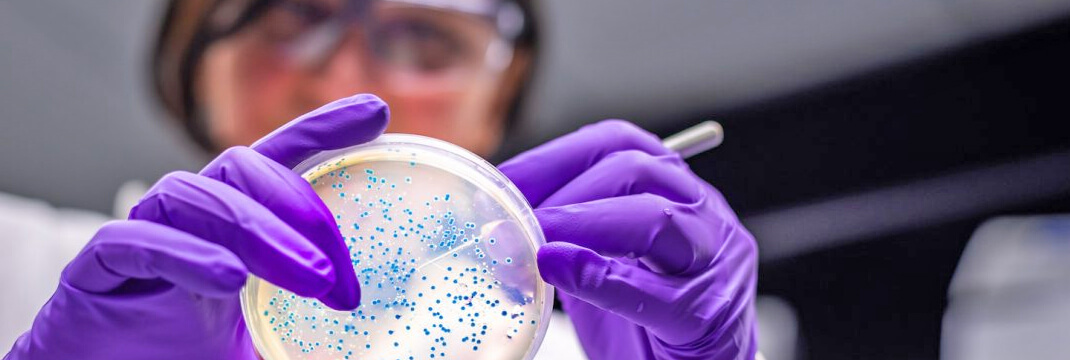
Hospital-acquired infections (HAIs, Health-care associated infections) are regarded as a serious issue, which needs much consideration as they increase the incidence of morbidity and mortality. Staying at hospitals, ill people are vulnerable to harmful microorganisms that are reported to exist even in the environment that is regularly cleaned and disinfected. Moreover, hospital-acquired infections treatment increases health-care costs. Obviously, scientists understand the seriousness of the problem and seek for ways to tackle it. One of the most effective measures that can be taken is a careful regular disinfection of the environment, the preoperative patients’ skin, and in some cases, other parts of the body, like teeth and oral cavity.
Hospital-acquired infection is considered to be any infection that originates from hospital. It is apparent that a person arrives to the healthcare institution with his or her own flora, which alters to the one of the hospital if the patient stays there for a couple of hours. A person gets ill if the acquired flora contains harmful microorganisms that affect a patient’s body if the immune system is weak. There are different types of HAIs. They are distinguished according to the way they are transmitted to the patient. Scientists single out catheter-associated bloodstream infections; ventilator-associated pneumonia is also regarded as a HAI. There are also viral infections that can be acquired during the bathing process, because of the environment, which is favorable for bacteria (Powers, Peed, Burns, & Ziemba-Davis, 2012, p. 339). Surgical site infections (SSIs) are reported to be the most frequent of all health-care associated infections (Edmiston, Okoli, Graham, Sinski, & Seabrook, 2010, p. 509). They are transmitted to a patient’s body during the operation. Bacteria exist in almost all conditions, and it is nurses’ task to prepare the surgical environment in a proper way. Because of carelessness of healthcare staff or, more often, ineffective antiseptics, harmful microorganisms remain on the preoperative patient’s skin (Graling & Vasaly, 2013, p. 547) and infect the blood during the surgery.
HAIs have different outcomes as they affect not only the health of patients, but also influence the entire healthcare system in general. They increase the amount of work for both physicians and nurses as ill patients require additional care, special treatment and, sometimes, expensive vaccines. The most significant impact of HAIs is their increase of morbidity and mortality rates. According to Black (2012), each year the U.S. hospitals admit around 39 million people, 1.7 million patients turn out to acquire HAIs and 100,000 people die (p. 124). For this reason, 18 states made healthcare institutions report on the rates of HAIs.
Many researchers and political leaders admit that healthcare costs rise significantly because of high incidence of HAIs. Black (2012), for instance, states that the U.S. healthcare expenses on HAIs treatment consist in $45 billion, while total healthcare costs are estimated over $150 billion (p. 124). Still, the scientist claims that there is no evidence about the effect of the annual reports on the rate of hospital-acquired infections. Nevertheless, it is necessary to admit that hospital reports make the situation clearer, so that some measures could be taken. In 2008, the California Governor Arnold Schwarzenegger adopted the Medical Facility Infection Control and Prevention Act, which obliged healthcare institutions to report on the rate of bloodstream HAIs and SSIs in the state (Halpin, Milstein, Shortell, Vanneman, & Rosenberg, 2011, p. 724). Arnold Schwarzenegger’s administration reported that each year HAIs healthcare costs consist in around $3 billion of the total healthcare expenses in California (Halpin et al., 2011, p. 723).
Struggling with your essay?
Ask professionals to help you!
Start Chat
There are different ways to fight the high rates of HAIs. Despite the fact that numerous researches have been conducted on the topic, scientists did not reach a consensus on the most helpful method to prevent HAIs and SSIs in particular. Nevertheless, the most effective one and, at the same time, the simplest and the easiest one is a careful disinfection of all rooms, instruments and, most important, a patient him/herself. Various antiseptics are used for this reason, but only some of them proved to be truly effective if one estimates the degree of killing the bacteria, longitude of protection and individual perception by the patients. Chlorhexidine gluconate products belong to these antiseptics as they are reported to significantly reduce the incidence of hospital-acquired infections. It is used for cleansing the preoperative patient’s skin (Edmiston et al., 2010, p. 510; Graling & Vasaly, 2013, p. 548), teeth and oral cavity (Munro, Grap, Jones, McClish, & Sessler, 2009, p. 428), and for regular patient’s bathing (Powers et al., 2012, p. 338). As chlorhexidine gluconate proved to be comparatively effective, it is suggested to be used for disinfection in healthcare institutions. Current researches show that chlorhexidine gluconate cleansing gives better results than other antiseptics, so it can significantly reduce HAIs rate.



